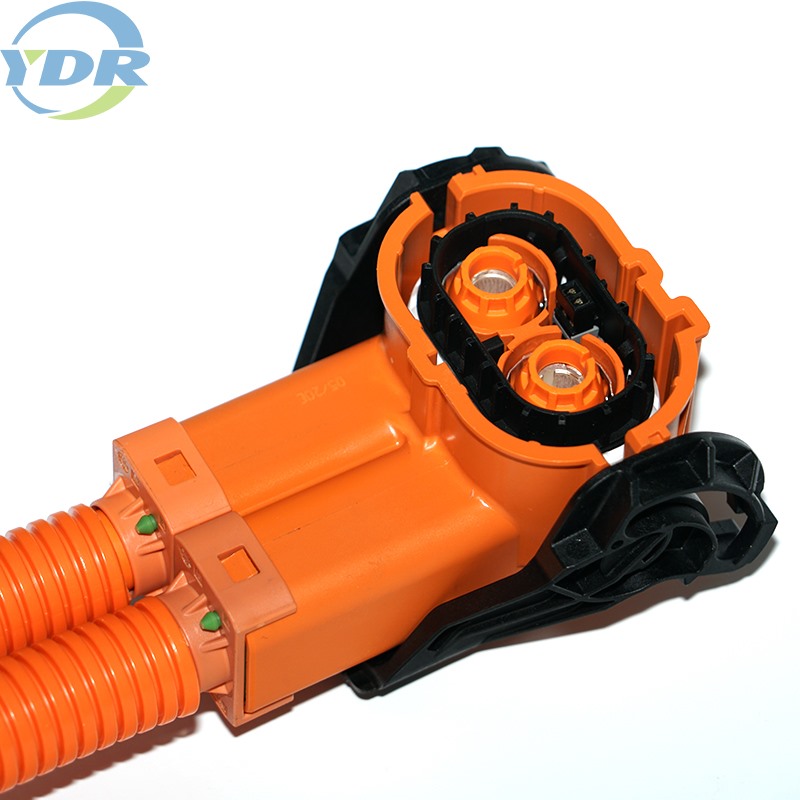Skillnaden mellan kabelanslutning och enhet
kontakt
The cables themselves are useless unless they end with a kontakt or a more special coaxial kontakt. A coaxial kontakt allows one cable to be connected to another cable or a device. Therefore, there are two different types of kontakts: those connected to the cable and those connected to the device. The device kontakthar en fyrhåls fläns.
1. Kabel centraliseradkontakt
In a cable, the kontakt is mechanically tightly connected to the end of the cable. Once the kontaktär ansluten till en kabel, blir det en kabelmontering. RF -ingenjörer ansluter sedan varje del efter deras egna behov. När det bara behövs några få kabelsammansättningar är de billigare och snabbare att montera själva; men när det behövs en hel del kabelsammansättningar är det bättre att köpa kabelaggregat.
2. Anslutning
Målet med varje
kontakt is the same, with minimum insertion loss. Although the insertion loss of the kontakt is very small compared with the cable, the
kontakt does have an insertion loss, and there are many different types of kontakts. Almost all kontakt families have kontakts suitable for cables and devices. As a general rule, the kontakts of one group will not match the kontakts of another group.
Because some kontakts are large in physical size, while others are small. If an inexpensive cable assembly is needed, then choose a small diameter cable, which limits the choice of
kontakts to the small kontakt family available. If the cable needs to carry high-power radio frequency signals, a large-diameter cable is required, so a large
connector krävs.
The second reason is evolution. As the times change, kontakt manufacturers often improve the connection according to actual needs, or reduce the insertion loss, or facilitate the use of the connection. Significant changes are made to an existing kontakt type each time.
3. Adapter
På grund av dessa olikakontaktfamiljer har ett intressant fenomen dykt upp. RF -ingenjörer tvingas ansluta en kabel med enkontakt to another cable or device with a different kontakt family. This cannot be done. The adapter is that they are in step. Adapters, also called coaxial adapters, are short bilateral kontakts. On one side is one type of kontakt, and once is another type of kontakt.

 English
English  Español
Español  Português
Português  русский
русский  Français
Français  日本語
日本語  Deutsch
Deutsch  tiếng Việt
tiếng Việt  Italiano
Italiano  Nederlands
Nederlands  ภาษาไทย
ภาษาไทย  Polski
Polski  한국어
한국어  Svenska
Svenska  magyar
magyar  Malay
Malay  বাংলা ভাষার
বাংলা ভাষার  Dansk
Dansk  Suomi
Suomi  हिन्दी
हिन्दी  Pilipino
Pilipino  Türkçe
Türkçe  Gaeilge
Gaeilge  العربية
العربية  Indonesia
Indonesia  Norsk
Norsk  تمل
تمل  český
český  ελληνικά
ελληνικά  український
український  Javanese
Javanese  فارسی
فارسی  தமிழ்
தமிழ்  తెలుగు
తెలుగు  नेपाली
नेपाली  Burmese
Burmese  български
български  ລາວ
ລາວ  Latine
Latine  Қазақша
Қазақша  Euskal
Euskal  Azərbaycan
Azərbaycan  Slovenský jazyk
Slovenský jazyk  Македонски
Македонски  Lietuvos
Lietuvos  Eesti Keel
Eesti Keel  Română
Română  Slovenski
Slovenski  मराठी
मराठी  Srpski језик
Srpski језик 





